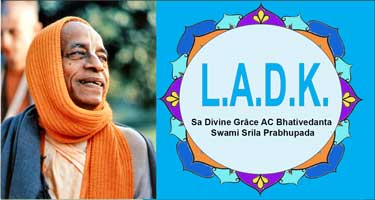
Lecture Bombay December 17,1974
Living entities, they have knowledge. That is the difference between matter and living entities. Living entities, they have got knowledge. The dull matter still requires to be developed. They are also covered knowledge. There is knowledge, but it is covered. Just like the tree: it is also a living entity, but the knowledge is more covered than the moving living entities. There are two kinds of living entities: moving and not moving, sthāvara-jaṅgama. Sthāvara means standing, cannot move. And jaṅgama means moving. So jaṅgama is better than this sthāvara. And amongst the sthāvara, there are varieties. The insects, ants, reptiles, serpents, they are also jaṅgama. But one is better than the other, one is better than the other, and finally we come to this position, human being, moving, but better than all the lower animals, insects. Development, development of consciousness. But originally we are all pure living entities. We are contaminated by the modes of material nature. The more we are contaminated, our consciousness is covered. Therefore it is said, guṇair vicitrāḥ.
Vicitrāḥ means varieties. Why there are varieties? The varieties are because according to our association with the different material modes of nature, therefore there are varieties. There are 8,400,000 varieties of forms simply on account of different type of association. Bhagavad-gītā also says, kāraṇaṁ guṇa-saṅgaḥ asya sad-asad-yoni-janmasu. So many varieties of living entities in this material world, they are due to guṇair vicitrāḥ, by the different qualities, mixture of qualities. So on the gross estimation the mixture is sattva, rajas, tamas, the first mixture. So this mixture has to be analyzed and separated. Just like in printing there is color separation process. It is also like that, color separation process. The sattva-guṇa, rajo-guṇa, tamo-guṇa, now mixed up by expert management, by expert process they can be separated, and we can come purely on the sattva-guṇa platform. And as soon as we come to the sattva-guṇa platform, then we can see things as they are. Chindanti sarva-saṁśayaḥ. When we are in the mixed-up qualities, then mumuhe, then we are bewildered.
Srimad-Bhagavatam 3.26.5

